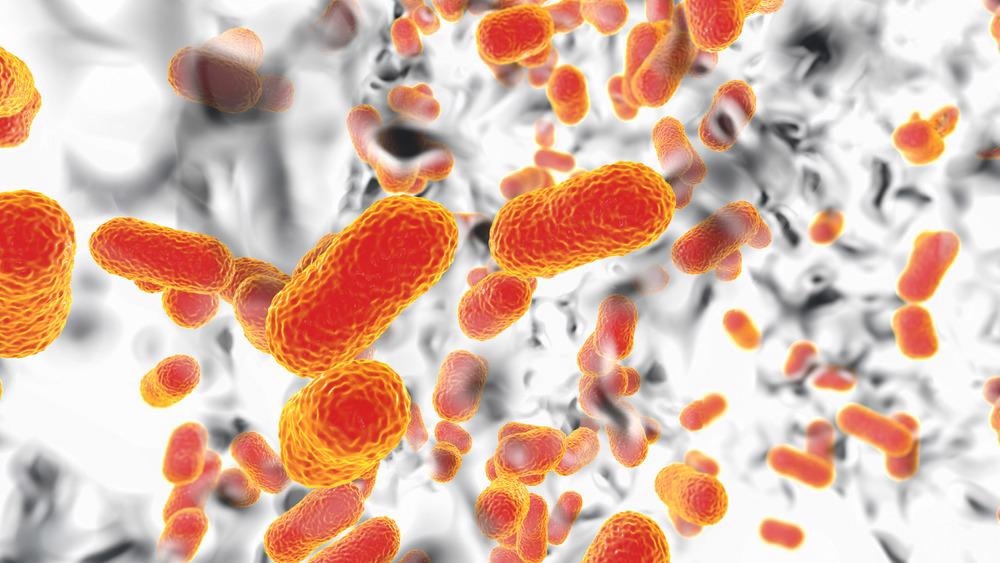The creation of plant-mediated silver nanoparticles (AgNPs) for fabric coating applications is the topic of a recent study published in the journal Materials Today: Proceedings, with results demonstrating 99.99% efficiency.

Study: Synthesis of plant-mediated metal silver nanoparticles for fabric coating. Image Credit: Kateryna Kon/Shutterstock.com
Importance of Silver Nanoparticles (AgNPs)
Silver nanoparticles (AgNPs) have been extensively investigated for years due to their potential usage as advanced functional materials with applications in electrical components, electro-optical sector, biosensors, medical diagnostics, nanoelectronics and electrocatalysts.
The electromagnetic, optical, antimicrobial, and biochemical properties of silver metallic nanoparticles are largely dependent on the size and morphology of the particles, with a smaller particle size preferable since it increases surface area and reduces the required concentration.
Because of their high conductivity, antimicrobial, and anti-oxidative properties, silver nanoparticles (AgNPs) are the most preferred metal nanoparticles in many industries. Silver nanoparticles can also act as an antiseptic and have a wide biocidal impact on bacteria by disrupting their unicellular membranes. As a result, they've been employed in a variety of biomedical applications, including surgical dressings, topical lotions, antibacterial sprays, and fabric coatings.
Biological Synthesis Methods for Silver Nanoparticles
Silver nanoparticles may be synthesized chemically, physically, or biologically. However, chemical and physical approaches are hazardous to the environment, and the use of harmful chemicals can severely restrict the use of AgNPs, particularly in biomedical domains. As a result, the advancement of biological synthesis methodologies that are cost-effective, environmentally benign, and free of harmful by-products has become increasingly significant in recent years.
The biosynthesis of AgNPs uses a variety of natural assets, including microbes, microalgae, plants, fruit and vegetables, and plant derivatives. Both unicellular and multicellular bacteria can produce intracellular and extracellular synthetic NPs.
Plant extracts, however, offer an advantage over microbes as synthesis agents since they exist extracellularly and may be employed in a simple synthesis process to produce AgNPs.
Fabrication of Silver Nanoparticles using Plant Extracts
The use of plant extracts for synthesizing nanoparticles has many advantages over other biological fabrication methods since it eliminates the need for cell culture upkeep and integrates support for large-scale nanoparticle creation.
Plants include macromolecules like proteins, glucose, and coenzymes, which are ideal resources of metallic or metallic oxide NPs owing to their ability to reduce metal salts into nanomaterials. Plant extract converts metal ions into nanoparticles faster than biogenic processes.
Silver nanoparticles generated from plant extracts, in particular, can gradually and efficiently absorb biomolecules, leading to a connection with the biological environment through the formation of a corona, which increases the NPs' efficacy. Plant-mediated silver NPs also have antibacterial capabilities, which might directly improve the effectiveness and productivity of the silver NPs when employed as fabric coatings.
A Novel Method for Producing Plant-Mediated Silver Nanoparticles
In this study, silver nanoparticles (AgNPs) were produced from Andrographis panniculata leaf extracts and dipped into cotton linen, polycotton, and polyester textiles. To test the efficacy of the synthesized plant-mediated silver nanoparticles, polyester/cotton fabrics, polyester, and 100 percent cotton fabrics were utilized.
Scanning electron microscopy was used to validate the nanostructure of the AgNPs (SEM). The average particulate size was estimated using the X-ray diffraction (XRD) method, and XRD also verified the face-centered cubic crystalline structure of the produced AgNPs.
The antibacterial ability of the AgNPs-coated textiles was evaluated against S. aureus and E. coli bacterial strains. The disk diffusion technique was used to investigate the antimicrobial properties of AgNPs-coated cotton, polycotton, polyester, and uncoated materials.
Important Findings of the Study
The microstructure of the silver nanoparticles coated textiles was investigated using SEM. It was discovered that the dispersion of the silver nanoparticles is partially uniform and that they congregated while sticking to the fabric material.
Fabrics coated with AgNPs had outstanding antibacterial capability against E. coli and B. subtilis bacterial strains, with antimicrobial efficiency equivalent to conventional antimicrobics. According to the qualitative antibacterial test findings, all of the textiles coated with AgNPs inhibited bacterial strains by 99 percent.
Plant-mediated silver nanoparticles were created as fabric coverings to limit the development of bacteria in this study. The produced fabric coatings are both environmentally benign and inexpensive. However, further research into the coating of nanoparticles on various surfaces is required before their widespread industrial applications can be realized.
Reference
Alhaji, N. et al. (2022). Synthesis of plant-mediated metal silver nanoparticles for fabric coating. Materials Today: Proceedings. Available at: https://www.sciencedirect.com/science/article/pii/S2214785322033958?via%3Dihub
Disclaimer: The views expressed here are those of the author expressed in their private capacity and do not necessarily represent the views of AZoM.com Limited T/A AZoNetwork the owner and operator of this website. This disclaimer forms part of the Terms and conditions of use of this website.